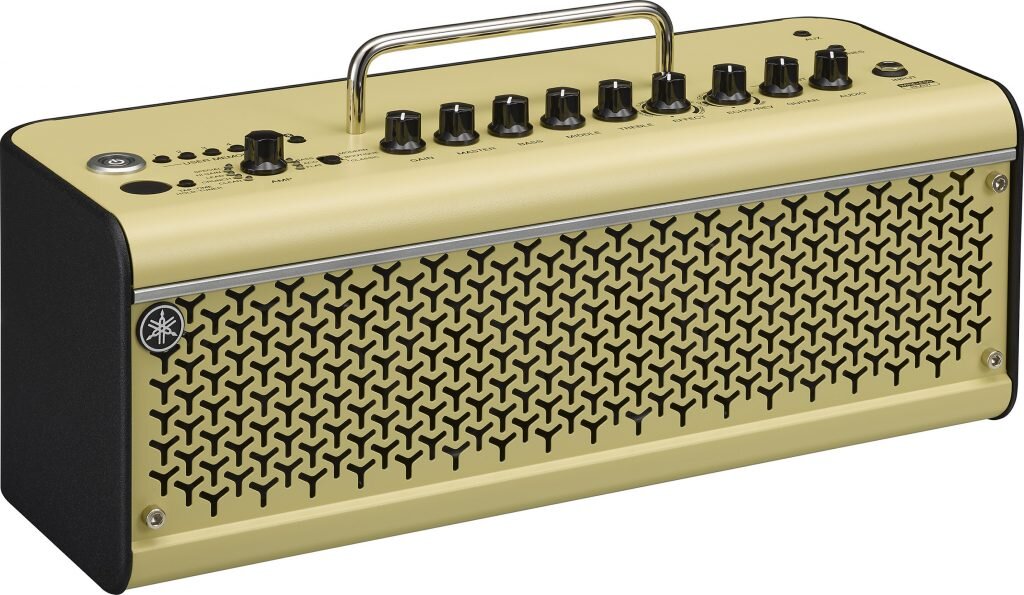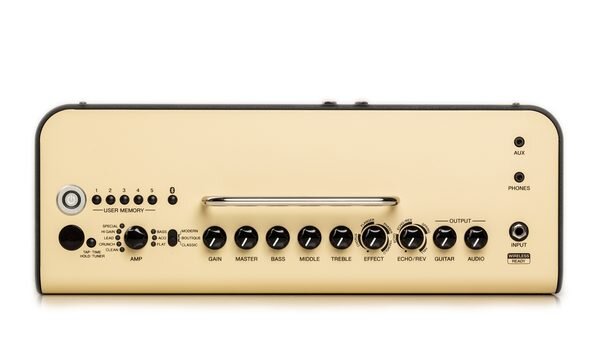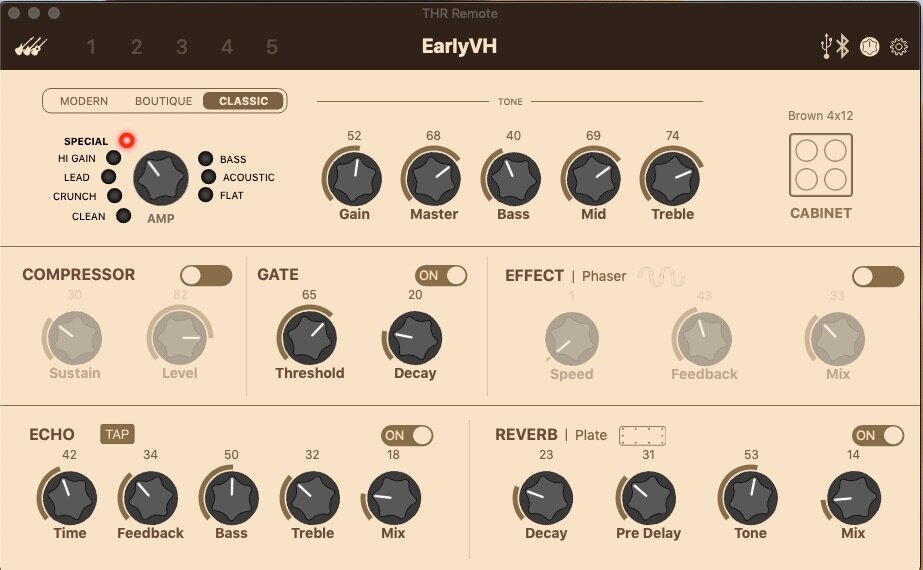Review : Yamaha THR 30II Wireless Amplifier
Yamaha THR 30II Wireless
Yamaha calls the THR series the "third amp", and I have to agree. It's not your gigging amp and it probably is not your studio amp. The product is designed to look decent in any home location, is unobtrusive and is built to deliver good tone at low volume.
I have had mine for a couple of months. I put it in my Living room as a place to play when on a short break from work, or before dinner with minimal setup. I made a mistake in this regard, as I wanted to play at louder volume in these periods in a room that was a bit too big for the amp. This is my opinion of course, so let it be said that your mileage may vary.
Things changed when I put my Helix and a pair of FRFR speakers in the living room and moved the THR 30II to my bedroom specifically for playing at low volume. I do not sleep through the night and am up at least twice a night for at least half an hour each time. Since making the THR II 30 available for this use case, I have changed my mind about the amp entirely.
The THR 30II is a digital amplifier. The series II family combines the three different colour offerings of the series I into a single amp. This is awesome as the series I always felt to me like a bit of pocket picking.
Yamaha touts the unit has having fifteen guitar amp models, three base amp models, three mic models to use with acoustics and a perfectly flat model for use with anything else.
The amp has three amp families, Modern, Classic and Boutique. Each family has a variety of default tone presets available by rotary switch. You use the same switch to access the bass and acoustic models. Yamaha does not document which amps each setting is modelling. GRRR. The Reference manual, which you have to download contains some hints, but clarity would be good.
The 30II Wireless is the top of the family lineup. It is rated at 30 watts output, has bluetooth connectivity to the excellent smartphone app, has line outs for recording to your interface, as well as USB direct outs. The unit includes a rechargeable LiION battery, ideal for playing where there is no AC power. The sound which comes from Yamaha's audio division called Extended Stereo Technology produces amazingly good sound from the very small drivers needed in a package this size. If you recall the old Apple HiFi, it's about that size, and delivers a very similar tonal range, which in my opinion, is excellent. The Wireless includes a built in Line6 receiver. Yamaha owns Line6 and the built-in effects are from the Line6 pantheon.
My only complaint is with the availability or more correctly, inavailability of the matching and optional Line6 transmitter. Apparently there are issues and my six week wait is going to be another six weeks or so.
The built in presets are what I would consider average starting places. I cannot say that I liked any of them out of the box. They do make a decent place to start and the iOS version of the app makes editing them a breeze and offers more functional variability than the on device knobs, particularly when it comes to effects. For example, the app let's me have delay and reverb at the same time, whereas with the knob it is one or the other. I confess that since I got the unit paired to my smartphone, I have only rarely touched the knobs on the unit at all.
There is a built in tuner that uses the same display as the battery gauge which is quite handy, although I would prefer that it be on the front panel instead of the top as when placed on a shelf as shown in much of the marketing material, the tuner is very hard to see. It's not a particularly sophisticated tuner but does the job. For greater ease of use, drop $25 on a Snark and move on.
Top deck of the THR 30II Wireless
In addition to the amp models, you also have cabinet simulations available. These include:
[table id=1 /]
I have to confess that I find Yamaha's reticence to say what cabinets they are trying to emulate annoying. I understand that doing so might cost them some money or require legal paperwork but they could do a better job of naming that would make the mental alignment easier. Line6 does this reasonably well and Yamaha owns Line6
In addition to the amp and cabinet modelling there are built in effects from the Line 6 pantheon. To gain access to all of them, you need to be using the THR Remote app on your smart device. The compressor and noise gate are only available this way. The Gate works fine, the Compressor is ok, but regular readers know that I am a compressor dork and this one is VERY basic. No 1176 here. Modulation effects include Chorus, Flanger, Phaser and Tremolo. They sound decent, although not high end and are more than adequate for the use case that the THR 30II is designed for. The onboard Echo offers up to 100ms of delay and tap tempo, plus basic EQ for the delay signal as well as a mix control. I found that setting it to a slapback level very effective to give some spacing in a small room. The reverb has four options (two via the knobs) including Spring, Room, Hall and Plate. Not studio grade reverbs, but more than sufficient for the use cases.
In addition to the user configurable options and five user memory positions, the THR II includes a number of factory presets. These presets are not just amp models, but configurations of amp and cabinet models along with effects configurations. They vary from very good to whatever, entirely dependent on your own preferences.
Screenshot from the Mac THR II Remote app, in this case showing the preset called EarlyVH
While I have used the amp mostly for electrics, I recently did a full bring back to life on an old Yamaha APX5 nylon string. I plugged it in and found a couple of settings that worked very well for it. I then tried my old Gibson Hummingbird that has a Fishman saddle pickup installed and it too sounded really nice. The Hummingbird is punchy unamplified so I would not do this at 2am while the family is asleep. I also have an ESP LTD 6 string bass. While I initially did not love this bass, I did a full set up on it on the afternoon of Christmas day and that made the necessary changes to make it a pleasure to play. Plugging it into the THR 30II Wireless sounded great, although I had to make my own preset for it as none of the factory ones delivered the tone that I wanted. In fairness, those presets were probably built for a four string bass, not the extended range of the six string. In reading the documentation, by using the Special amp model and some tweaking, the unit is purported to be a good choice for low volume practice with extended range guitars. I have not played my Strandberg 8 string through it, but I certainly will be.
And that, I think is the point. If you use the THR II family as I think intended by the engineers and less so by some of the marketing statements, you are likely to be very happy with the unit. In my first use situation, it was the wrong tool. Where it sits now, on a small table in my bedroom, it is tremendous.




